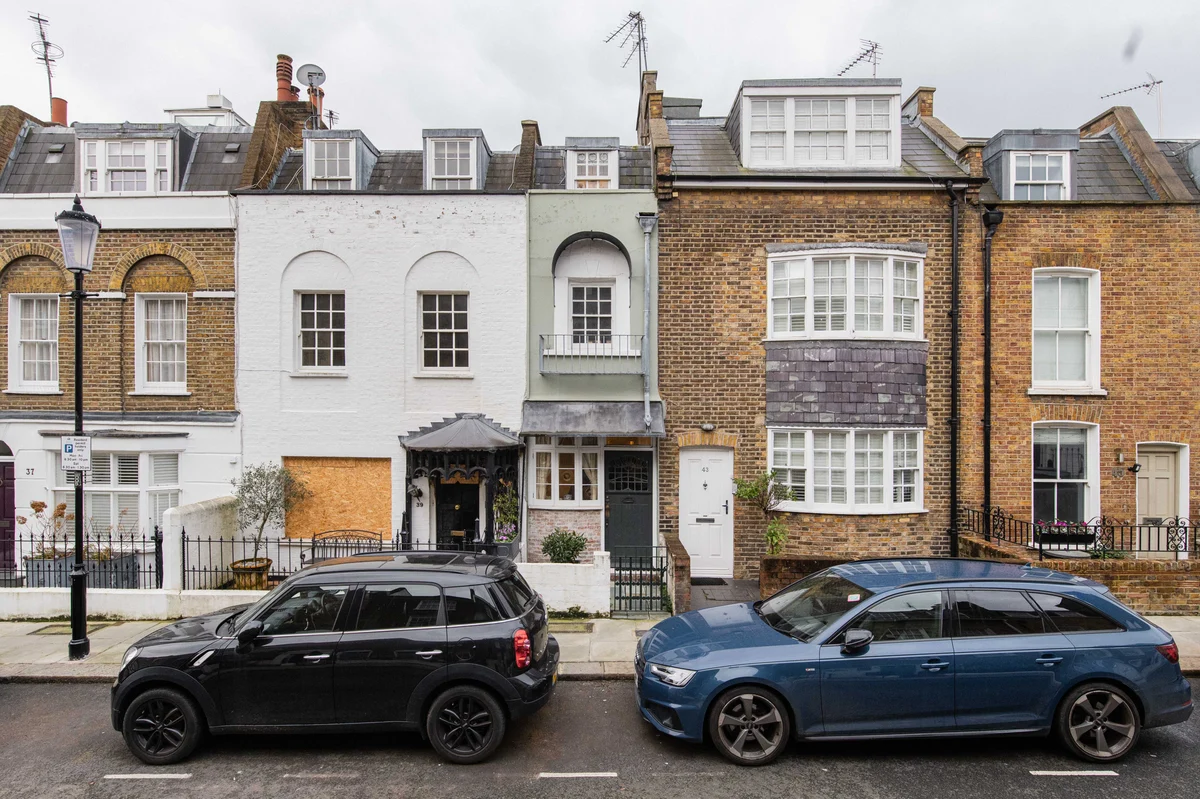By Emma Magnus
Copyright standard

On Notting Hill’s Peel Street lies a house which has much of the same grandeur as its neighbours — a stained glass front door, canopied entrance and Juliet balcony, for example — but is only half their size.
The slender property measures just 2.1 metres across at its narrowest point (2.2m at its widest), making it roughly the width of a black cab. It’s for sale with The Unique Property Company for £1.195 million.
The house was built in the 1930s in the gap between the two neighbouring buildings. Originally, the land had been a passage connecting a former builder’s materials yard with the road.
Dubbed “London’s second-narrowest home” (the narrowest, apparently, is a 171cm-wide house on Goldhawk Road), the compact house spans 538 square feet over three floors today.
Downstairs, the front door opens straight into the “Tardis-like” kitchen and dining room, where the owner has managed to fit a small five-seater table under the stairs.
There’s an “ingeniously assembled” WC and shower room towards the back of the building, along with one of the house’s bedrooms. It’s just about wide enough to accommodate a double bed.
The living room occupies the whole first floor, with a fireplace, Georgian-style sash window and an adjoining roof terrace. The master bedroom, with an ensuite, is upstairs, covering the top level.
“Everybody that’s viewed [the house] says the same thing: you forget how narrow it is, especially on the ground floor. I think that’s largely down to the ceiling height,” says Simon Stone, managing partner of The Unique Property Company.
“Having the outside space is a real bonus as well. It’s completely landlocked, so it’s very quiet. It’s a nice place to have a coffee or a glass of wine, depending on what time of day it is.”
The house was last advertised for sale in 2016, and was eventually purchased by its current owner in 2018. A businesswoman who lives abroad, she had an “affection for unusual homes” and intended to use the property as a London base.
It was sold with planning permission to excavate a two-storey basement, although this is something its new owner did not pursue.
Instead, she renovated the property, giving it a more rustic, Arts and Crafts feel. The glass staircase, for example, was replaced with a wooden one, with parquet flooring installed in the kitchen, the walls in the living spaces repainted duck egg green and the house’s wooden floorboards uncovered.
“The works that were carried out were very much in line with Arts and Crafts interiors and styling,” says Stone. “For example, there’s a dragon’s head on the drainpipe outside, which was part and parcel of the refurb. It’s all these little details that are reflective of that period.”
During the pandemic, however, the rise of online meetings meant that the owner no longer needed to travel so much for work, and the house was not required. More recently, she has rented it out on Airbnb, where it is advertised as a “true pioneer in the world of compact living”, for around £330 per night.
The house on Peel Street is one of a number of skinny homes to hit the market in the past year. In February, for example, a 2.5-metre-wide house in Clerkenwell, known as the Wee House, was listed for £815,000. Westbourne Grove’s so-called Bank Robber House, a slender, bright pink building that was used to sell Banksys, was advertised for £1.25 million in January, while a narrow property in Walthamstow, used as a studio space, was listed for £150,000.
Stone believes that the Peel Street property is likely to sell to a single person or couple as a London home, or to an investor for use as an unusual pied-à-terre which can be rented out when not in use.
“It’s a really desirable pocket of London. You’ve got Notting Hill Gate Tube right round the corner, you’ve got Kensington High Street about a 10-minute walk away; lots of decent shops; lots of artisan stuff going on. It’s got a very nice London vibe to it,” says Stone.
“It’s a nice place to be. You have to remind yourself that you’re in a house that’s narrower than a London Tube.”



